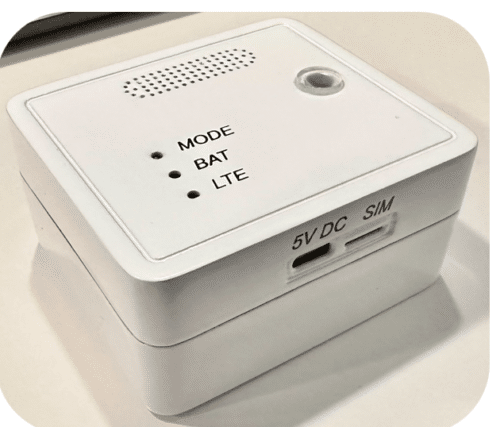Empowers the Creation of Battery-Powered NB-IoT Devices, Compatible with All Indian Telecom Carriers

Eoxys is unveiling its XENO+ NB(Narrow band)-IoT( Internet of Things) ML(Machine Learnig) SOM (System-On-Module) module, a fully-fledged SOM designed for the efficient operation of advanced IoT/AIML devices in applications such as smart metering, smart lighting, smart tracking, and industrial automation. This remarkable innovation represents an industry milestone, as Eoxys’ SOM seamlessly integrates Renesas’s cutting-edge RH1NB200 LTE Cat NB1/NB2 modem with Syntiant’s powerful NDP120 Neural Decision Processor. This integration offers an exciting convergence of AI and Deep Learning capabilities with robust cellular connectivity, opening up unprecedented avenues for innovation within the IoT ecosystem. By harnessing the intelligent computing prowess and seamless cellular connectivity that this module provides, customers can significantly expedite the development of their IoT products, particularly in the domains of smart metering and smart tracking.
The SOM module offers several key advantages, including:
- Significant Time Savings: Customers can reduce hardware and software development time by up to 40%, streamlining their product development processes.
- Simplified Software Development: The Software SDK provided alongside the ML SOM modules aids customers in cutting down on embedded software development time, making the development process more efficient.
- Seamless Compatibility: With consistent pin mapping across all XENO+ ML SOM modules, software compatibility is ensured among all connectivity variant devices, simplifying integration efforts.
- Over-the-Air Upgrades: Customers can take advantage of the Firmware Over-the-Air (FOTA) feature provided with XENO+ ML SOM to easily update MCU Application binaries, ML Model binaries, and Modem binaries, keeping their devices up-to-date.
- Versatile Neural Processing: The NDP120 is capable of running multiple Deep Neural Networks (DNN) on a variety of architectures, including Convolutional Neural Networks (CNNs), Recurrent Neural Networks (RNNs), and fully connected networks, supporting up to 256 layers.
- Future-Ready Flexibility: Customers can initially deploy IoT use cases and seamlessly upgrade to ML use cases on the same device in the future, allowing for scalability and adaptability.
Customers can streamline product development by focusing on sensors and unique value propositions, ensuring top security and performance. The modem module is designed for Indian telecom carriers, prioritizing bands B1, B3, B5, and B8, ideal for Indian markets like smart metering, lighting, and tracking. Notably, it’s highly power-efficient.
It features an integrated EAL5+ Secure Element (SE) to provide unparalleled security, crucial for protecting end applications like smart energy and water metering systems. Additionally, it incorporates the Syntiant NDP120 Neural Decision Processor, capable of simultaneously running multiple machine learning applications for audio and time-series sensor data with minimal power consumption. The NDP120 processor is optimized to efficiently handle various deep neural network architectures, including CNNs, RNNs, and fully connected networks with up to 256 layers, ensuring peak performance across diverse applications.
To demonstrate the capabilities of NB-IoT ML SOM in practical embedded devices, we’ve created an Audio Classification Device (ACD) centered around the NB-IoT ML SOM module. This ACD is equipped with a Machine Learning model for identifying real-time human alert sounds in its environment, including baby cries, gunshots, dog barks, drilling noises, car theft alarms, jackhammer sounds, fire alarms, glass breaks, hammering sounds, men’s screams, and women’s screams. The NDP120 processor handles the classification of these sounds, and the results are transmitted to an IoT Dashboard application using LTE NB-IoT connectivity, which efficiently utilizes both NIDD and HTTP-based data protocols for data transmission.
Furthermore, there’s an AIML Evaluation Kit (EVK) tailored specifically for the NB-IoT SOM module. The AIML EVK Kit is designed to enrich the IoT product development experience for developers, researchers, product design engineers, and students by offering hands-on sensor experience. Users can experiment with AIML-based IoT applications using this kit. Developers have the flexibility to create embedded C-based applications for sensor data collection through interfaces like I2C, UART, SPI, ADC, and DAC. They can develop Tiny ML models and load them onto the AIML EVK Kit to run these models on audio or time-series sensor data, enabling advanced ML classifications for various applications. Moreover, developers can transmit ML classification results to a cloud server using HTTP, MQTT, or TCP data protocols through NB-IoT connectivity. This comprehensive ecosystem empowers developers to explore and implement cutting-edge AIML solutions in IoT applications.





